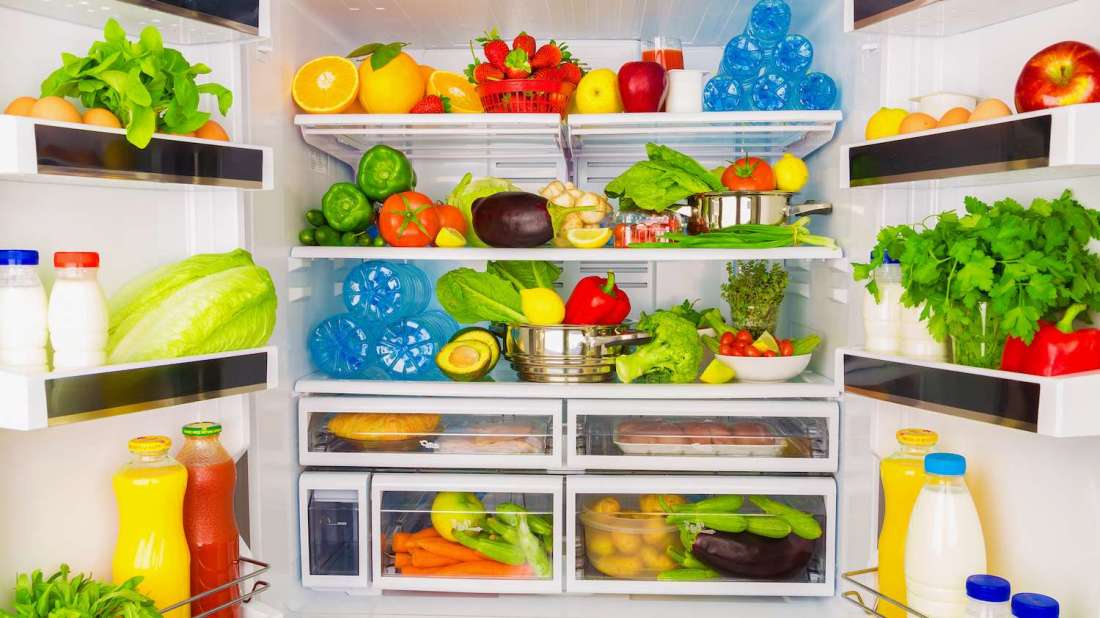Interest in healthy nutrition and healthy lifestyles is increasing every day. We wonder which is the healthiest diet and Google which foods we should eat or not. But there is a more important point than which foods we eat: How do we cook or prepare them for a healthy diet? We always ignore the fact that healthy nutrition demands healthy cuisine. We all have traditions and habits in the kitchen. Although we constantly search for the healthiest diet, we forget to review our kitchen habits.
Step 1 - Supermarket
You are walking down the aisles of the supermarket and looking for the item that you want to buy. While you are walking down, you notice a section where you think you’ll find your item. You start paying more attention to find out where it is exactly. Have you ever noticed that all the products’ places in the store are planned as a sales strategy?

The most needed products are located along the back and sides of the supermarket, and it’s necessary to walk down the aisles, which are stocked with junk food and processed products, to get there. Children are targeted by the products located at eye level. All of these strategies aim to produce a high daily sales volume of branded products. It’s a good idea to make a shopping list so as to not forget your main goal. Also, try not to go to the supermarket when you are hungry so as to avoid buying unnecessary junk food.
Don’t forget: A healthy diet starts at the supermarket.
Step 2 - Fridge
What Should You Have In the Fridge?
As the second step for a healthy life and a healthy diet, you should check your fridge.
Try creating a rule with your family or housemates to not stock junk food. It’s a good way of avoiding unhealthy snacks. Also, it helps maintain your motivation to have a healthy diet.
High Sugar
Packaged foods are always the easiest way of snacking, but don’t forget that packaged snacks include high sugar and additives. They are colorful and attractive to children especially, but studies show that some color additives may be linked to attention deficit in children. Don’t stock junk food! As an alternative to packaged snacks, you can prepare healthy snacks and desserts which have less sugar and no additives.
When it comes to beverages, a good challenge is liberating yourself from sweetened and processed drinks. Quit putting high-calorie drinks into your fridge. If you like drinking fruit juice, your priority should be homemade, fresh juices. Also dairy products -such as milk, plant-based milk, and kefir- are healthy alternatives to sugary beverages. Dairy products strengthen your bones and your gut microbiota.
High Fat
Sugar is not the only danger in junk food. There is an invisible danger as well: fat. Most snacks include high amounts of fat, which is mostly saturated fatty acids and some trans fats. Avoid stocking high-fat snacks such as chips, crackers, frozen pizzas, ice cream, cookies, and cakes. For a piece of healthy snack advice, you can check it out here.
High Sodium
Drinking a bottle of mineral water per day boosts the micro-nutrient (such as potassium and magnesium) intake. We certainly have micro-nutrient needs, but our sodium needs are so limited. Consuming higher amounts of sodium than we need can negatively impact our fluid and electrolyte balance. Processed meat and canned fish, as well as many other packaged industrial foods such as soup mixes, contain high sodium.
Create a Healthy Fridge!
Fresh vegetables and fruits; unprocessed meat, poultry, and fish; dairy products; homemade healthy snacks; fresh fruit juices; and mineral water are all perfect for your new fridge full of healthy foods.

Step 3 - Kitchen
Let's Take a Look Together at What Is Healthier in the Kitchen
Often we cook food without caring how much oil we put in. Having an awareness of the amount of cooking oil used makes weight control easier. Solid fats include saturated fatty acids which are dangerous for those prone to heart disease. Cooking meals without solid fat helps to regulate cholesterol and provides protection against heart disease. Cooking styles are important for both limiting fat intake and keeping food’s nutritional value. In addition, cooking food in boiling water is the most recommended cooking style by nutritionists. Boiling rather than frying prevents you from taking in more fat than you need.
Cooking vegetables for a shorter time is also important so that the vegetables keep their nutritional value. Boiling with less water decreases nutrient loss as well because food’s nutritional contents escape into the water during the boiling process. To go a step further in retaining your food’s nutritional value, keep and reuse your boiled food’s water. For example, you can use it to make a sauce for another dish. Eating fresh foods is another good way to take in nutrients and is beneficial for our bodies. If you don’t want to keep food in your fridge for a long time, be careful about the amount of food that you cook. This will also help you avoid eating more than you need.
Step 4 - Meals
Colorful and Nourishing Meals
After the first three steps, making your meal colorful and nourishing makes a healthy life and diet more joyful and fun. You can accomplish this by preparing colorful salads and adding fermented dairy products to your meals. For a healthy meal, you should include protein, grains, vegetables, fruits, and dairy. Vegetables and fruits are always the most colorful parts of meals. Don’t forget to consume different kinds of meat such as fish, poultry, and red meat in order to meet your protein needs in your meal. You can also consume legumes as protein. Grains include any food made from wheat, rice, oats, cornmeal, or barley. If you like eating bread with your meals, it’s best to choose whole grain bread to increase your fiber intake.
One of the most prominent myths about living healthy is that a healthy diet is expensive. These 4 steps break this myth down one by one. It costs little to no money to take these steps. A healthier diet is just four easy steps away!












